SEASONAL CLASSICAL MIXES
SPRING
SUMMER
MIDSUMMERS NIGHT DREAM-You are floating down a languid river on a warm summers night.
AUTUMN.
WINTER AND CHRISTMAS see and hear here.
MUSIC-THE SOUNDTRACK TO LIFE
SEASONAL CLASSICAL MIXES
SPRING
SUMMER
MIDSUMMERS NIGHT DREAM-You are floating down a languid river on a warm summers night.
AUTUMN.
WINTER AND CHRISTMAS see and hear here.
FOR A VIDEO ABOUT ALL THIS SEE ….
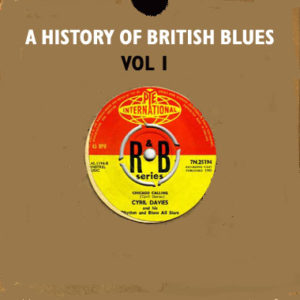
It seems hard to believe but the roots of British R&B lay not with a certain rubber lipped, snake hipped vocalist called Mick Jagger but with an ageing, balding, ex-panel beater, nicknamed ‘Squirrel’ or Cyril Davies.

Above– A pre 1962 photo with Cyril Davies on left, Charlie Watts on drums and Alexis Korner with perhaps Jack Bruce on bass.

Along with Alexis Korner and Chris Barber this triad began what became an overwhelming tide of blues that shaped the next fifty years of rock music.
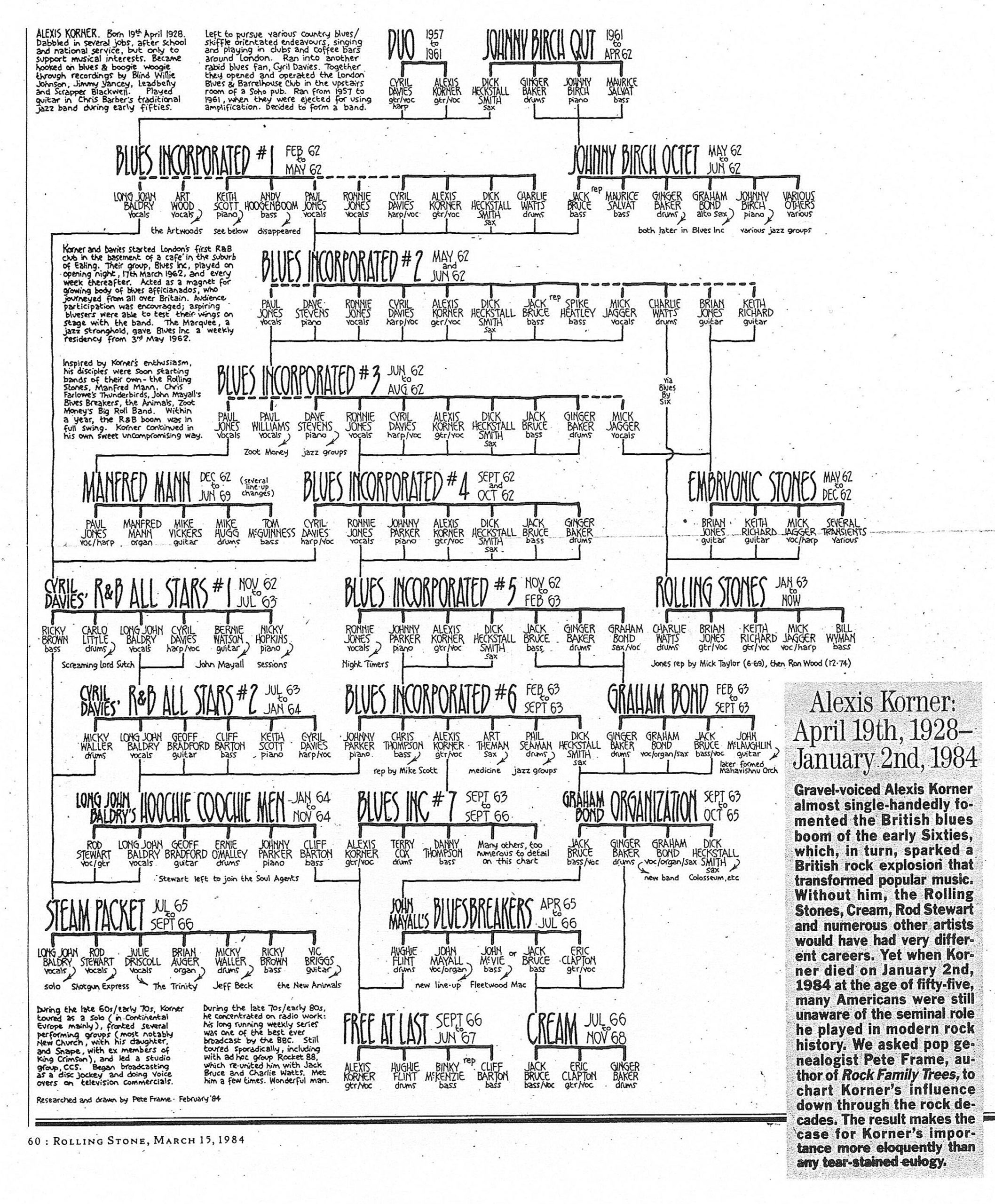
Cyril Davies helped to pioneer electric blues in Britain as part of Chris Barber’s band. Barber had a traditional jazz band which was a hot commodity at the time in the late fifties but they also did blues for part of their performances. Barber was also instrumental in bringing American Blues performers to the UK for tours.
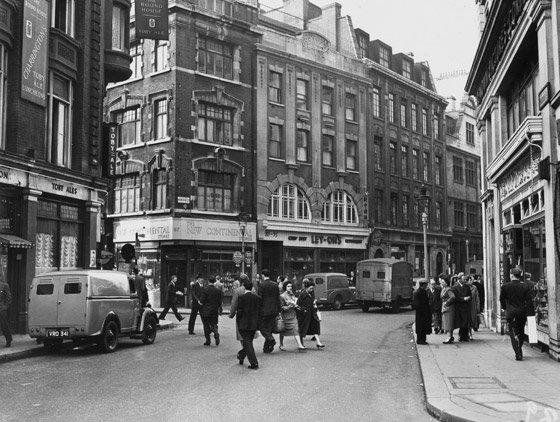
Above Wardour Street in Soho and the Roundhouse Pub (left on picture) in about 1960. That pub is where the very early British blues scene originated.
(Also on that street the Flamingo Club famous later in the sixties for the Hammond organ based jazz blues of Georgie Fame)
Below-In 1962 this seminal blues album came out in the UK.


In March ’62, after building up a sizeable following at the Roundhouse Pub in Soho they moved to west London’s Ealing Jazz and Blues Club.
Below from left-? pianist, Alexis Korner, Jack Bruce, Mick Jagger, Cyril Davies. Drummer not seen could have been Charlie Watts.

By the end of May ’62, the band had a more regular line up and was offered a Thursday night residency at The Marquee Club on Oxford Street. Their first appearance attracted just 127 loyal followers but by October they were regularly pulling in a crowd of 1,000. In November 1962, Davies left the band to form his own Cyril Davies’ All-Stars with members recruited from Screaming Lord Sutch’s Savages, including drummer Carlo Little, pianist Nicky Hopkins, Long John Baldry on vocals and black female trio, the Velvettes.
Davies soon claimed that weekly Thursday night Marquee residency for himself and subsequently played there every week throughout ’63. He also released two singles that year, ‘Country Line Special/’Chicago Calling’ (at the time the only British single that ‘American Only’ purists bought) and ‘Preachin’ the Blues/Sweet Mary’.
He passed away on January 7th 1964, two weeks before his 32nd birthday. On January 28th, the first of two benefits concerts in aid of his wife and two children took place at the Flamingo featuring Georgie Fame & the Blue Flames, Alexis Korner and the remaining All Stars under the new banner Long John’s Hoochie Coochie Men. The second took place at Fairfield Hall in Croydon on Feb 21st and featured Sonny Boy Williamson and Chris Barber’s band. Cyril Davies was on the verge of national recognition. Whether he would have been successful in the long term is questionable, but it remains undisputed that he was the greatest harmonica player in this country at that time. (Courtesy of Paul ‘Smiler’ Anderson, July 2014).
Below-On the Hullabaloo TV show. Cyril Davies All Stars featuring Long John Baldry and the Velvelettes. 1963
The show was produced by Jack Good who also produced the first Blues incorporated album.
The next year this EP record was made.
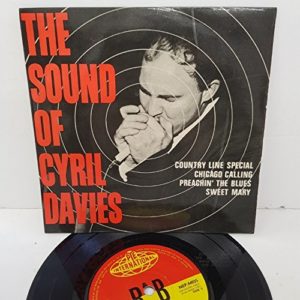
Below from Hullabaloo 1963- Long John, Cyril and the Velvelettes
Another version of Mojo this time a year later in 1964. Long John Baldry with the Beatles in the audience balcony on a Beatles TV Special called “Around the Beatles” with Backing vocals by Liverpool’s Vernon Girls. Baldry by this time had gone his own way with the Hoochie Coochie Men who may have been backing him on this video..
If you can stand to read anymore here is a good page from the UK Blues Federation and here from wikipedia.

Above The early Rolling Stones playing at The Crawdaddy Club in West London. Note in those days the sixth Stone Ian Stewart playing maraccas though his best work was on piano and organ. He played on many records but at some point it was decided he wasn’t optically acceptable for live performances. He was always a Stone though and played on many Stones albums.
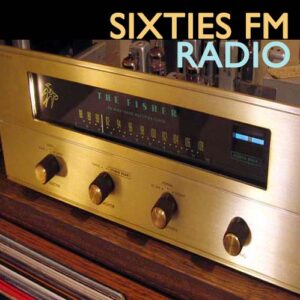
“Tom always wanted a radio station that sounded like you were in the living room of a friend who had the most amazing stereo system imaginable and a tremendous collection of records and impeccible taste.”
Howard Hesselman talking about Tom Donahue of KSAN in San Francisco and his vision of what a radio station should be.
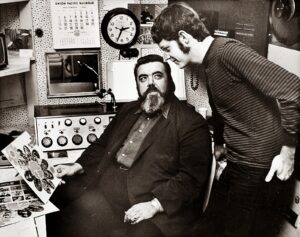
Above –Tom Donahue “Big Daddy” Donahue 300 pounds of solid Sounds holding what looks like the first Big Brother album..
One got an education listening to KSAN. It wasn’t just a string of unrelated computer algorhythm generated hits. Yes- there were popular records played- but between them were other less well known tracks all connected and linked in some way. All in perfect booming stereo sound with a bare minimum of advertising. Sales of those big tube amplifier tuners went up because of this.
Each part of the day had a particular flavor depending on who was playing the records. Mornings were easy going folk and country blues. Friday and Saturday nights were very funky. Sunday mornings aired the philosophy of Alan Watts.
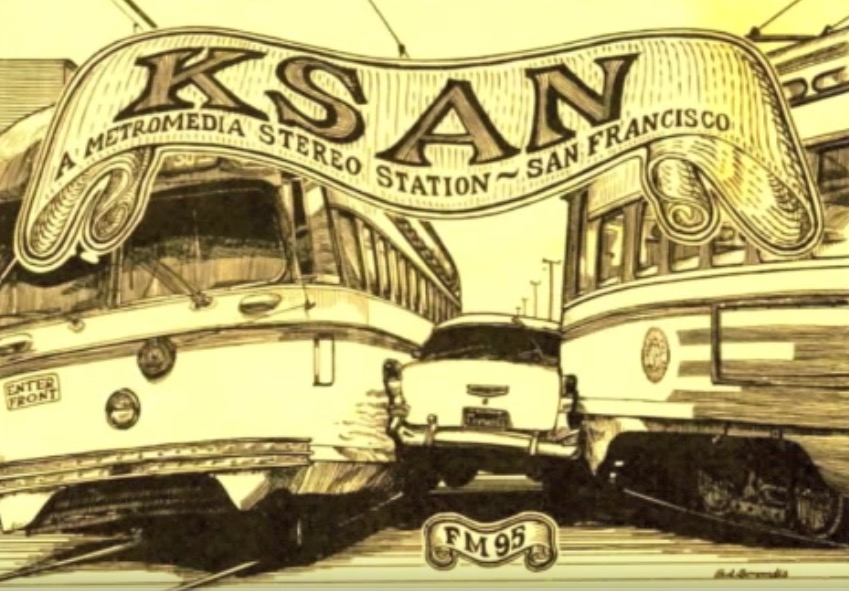
Saturday night midnight to 6 am the best of Bay area soul music with Dusty Street and Voco (The Mahdi) . (Photo below).

“It’s midnight….. lights off….. clothes off…… candles glowing….. incense is fading away……. don’t need no electricity, baby- I’ll be your amplifier, because we can boogie in the dark'” – and so pioneer San Francisco disc jockey Voco introduced himself every Saturday night at midnight.
Though called Lights Out it was anything but sleepy.
You tube also has this documentary below about KSAN
What do you turn on when you turn on?
The basic energy of the galaxy is turn on, turn off.
Free energy, structure, release, control, turn on, turn off.
The oscillating rhythm of turn on, turn off.
Expansion, contraction, turn on, turn off.
The body beating to the old basic rhythm, turn on, turn off.
Open, close, in, out, contract, release
Speed up, slow down, get free, get hooked
The cellular trip is through the body.
The proportions remain astronomical.
The mammalian body, the human body incomprehensibly galactic.
Trillions of cells centering around structured organs
All interconnected humming with market transactions, weather reports, pollution ratings.
Stellate arterials, watery canals jammed with plasma planets.
Hematological mysnerian clusters, white corpuscle comets.
Endocrine spaceships commuting.
The whole monstrous galaxy leaping through terrestrial networks
Of living forms- all in communication.
An 18 inch layer of slime covering a metal rock planet
And every isolated organism around a 25,000 mile radius breeding life forms
The one whole, a biological web.
Reincarnation center, densely-packed genetic energy.
And outward bound from this compressed center
The web of molecules weaving a cellular fabric
Exchanging, expanding, hooking into the organic network surrounding.
The cerebral headquarters ringed by a sensory dewline
Of billion stations receiving and transmitting energies
From within and from without the somatic galaxy.
The common sense organs: motor, taste, touch, balance, temperature, posture, movement
Light waves, night waves, sound words.
Each sense organ operates on the same rhythm
on off, open up, close down: alternating currents.
While the body galaxy centers on a densely packed DNA strand
Every organ constellation within the body zodiac orbits around the brain.
The brain: galactic headquarters of the nervous system
Filling corporeal space with flashing electric messages
Out and back, off on synaptic conversations.
The cunning amino acid architect sits snuggly protected and miniaturized
General Motor plant engineering cell chambers.
Design more and more complex Fisher bodies.
This year standard equipment: a thirteen billion cell brain hooked up to stereophonic audition receivers.
Bifocal self modulating auto-tuning retinal video cameras.
Cell battery-powered kinesthetic magic eye shock adjusters.
Gustatorial liquid analyzers.
Sub lingual pollution detectors.
Self regulatory nasal gas traps for analysis and evaluation
Of veriable chemical content.
Energy moves structure captures
Around and round floating somatic constellations cycling circling
The major structures have been identified for millennia
By astrobiologists, philosopher priests, healers, observers of the fleshly heavens.
Each unit of energy in this cosmic dance charged with attraction repulsion forces.
Pulling towards, escaping from.
Intensely contracted nuclear energy at galactic center
Explodes scattering suns, hurtling out across a million light-years.
Each stellar fragment, itself highly charged, spins through web fabric fields of radiant energy.
What do you turn on when you turn on?
Tim Leary
This is from the album “You can Be Anyone This Time Around” (Douglas Records No 1) recorded during an all-night jam session at the Record Plant.

The purpose of the album was to raise funds for Leary’s political candidacy for Governor of California.
The title track and “What Do You Turn On When You Turn On” both feature sampling of music by other artists, including The Beatles, The Rolling Stones, and Ravi Shankar. This is one of the earliest known examples of sampling on a commercial record.
_________________________
Speaking of tripping…..
DONOVAN- THE TRIP
We was a-d-d-d-drivin’ d-downtown L.A.,
About a-midnight hour
And it almost b-b-blew my mind
I got caught in a coloured shower
All those lights were t-t-twinkling on Sunset
I saw a sign in the sky
It said, “T-t-t-trip a t-trip, I trip, trip,”
I couldn’t keep up up if I tried
Ah, we stepped down to reality company
To get some instant sleep
And the driver turned, I said, “Welcome back”
He smiled and he said, “Beep beep”
What goes on? Chick-a-chick
What goes on? I really wanna know
What goes on all around me?
What goes on? I really wanna know
When in should come-a my dream woman
She got sequins in her hair
Like she stepped out of, of, of a Fellini film
She sat in a white straw chair
But I thought I’d take a second look
Just to see what I could see
And my scene had popped out like a bubble does
There was nobody there but me
I said, “Girl, you drank a lot of drink-me
But you ain’t in a wonderland
You know I might-a be there to greet you, child
When your trippin’ ship touches sand.”
What goes on? Chick-a-chick
What goes on? I really wanna know
What goes on? Chick-a-chick
What goes on? I really wanna know
A silver goblet of wine is-a to be
Held in a bejeweled glove
And her knights, they toast the tournament
The falcons they fly above
And the queen will a-drink of the dew tonight
But the jester, she cries alone
Because Merlin spoke of an instant spell
To make the devil’s white knights moan
And-a all in all, the seagull said
“As I look to where I’ve been
The whole wide human race
Has a-taken far too much Methedrine”
What goes on? Chick-a-chick
What goes on? I really wanna know
What goes on? So near
What goes on? I really wanna know
Yeah, well, come on
We sat in a velvet jewel case
With sparkles everywhere
And Julian, he sat on a diamond ring
And he talked of days gone by
We spoke of a common kaleidoscope
And the pros and the cons of Zen
And he spoke and he said for a piece of cake
He really did have a yen
Bobby Dylan he sat “the Mad Hatter”
A broken hourglass in his hand
And-a Joanie sat in a white lace
Looking cool with a black lace fan
What goes on? Chick-a-chick
What goes on? I really wanna know
What goes on? Yes! Please tell me
What goes on? I really wanna know
Donovan
_________
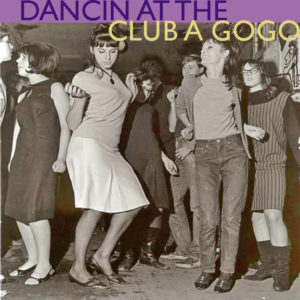
The Club a Go in Newcastle was one of the classic clubs of the early sixties where one could hear all the best bands that played the blues circuit around the country, along with American artists that were touring the UK at the time.
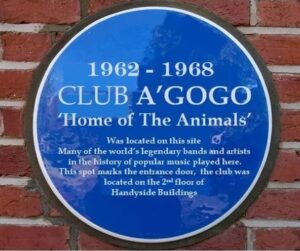
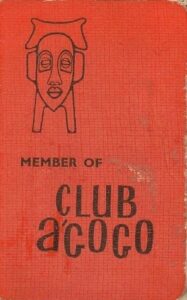
Before they had a hit record bands at that time had to do the tour of these clubs which were in almost every big city.
The resident band at Newcastle’s Club A Go Go was the Alan Price Combo soon to become the Animals. They played most weekends- but after their big hit House Of The Rising Sun we understandably didn’t see them at the club much more.
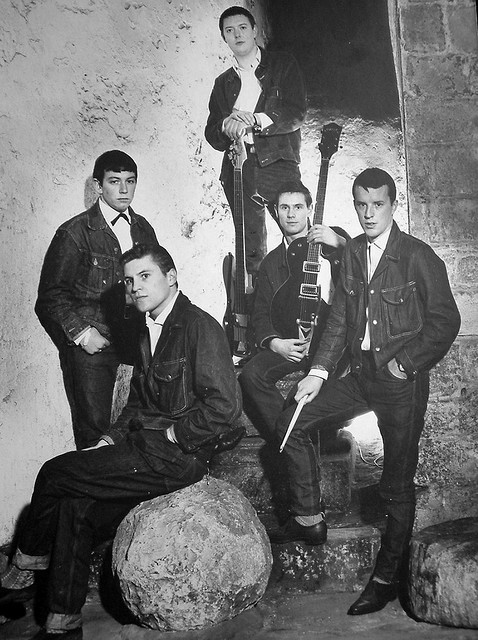 Above-The Alan Price Combo. They changed their name right about the time they backed Sonny Boy Williamson on his tour in late 1963. They made a live album at The Go Go with him and some tracks are on Vol 1
Above-The Alan Price Combo. They changed their name right about the time they backed Sonny Boy Williamson on his tour in late 1963. They made a live album at The Go Go with him and some tracks are on Vol 1
Sonny Boy did not have a back up band but would- like many artists, hire local bands for the job. He thought the Animals quite up to the job but we will not mention the names of those bands he thought not up to par.
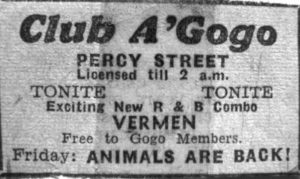


Above The Young Set for those under drinking age. Visiting bands played one early set at eight pm then moved across the lobby to the Jazz Lounge for two more sets until 2 am. when it was last orders.
The Stage in the “Jazz Lounge” was only a few feet wide and only raised a few inches above the dance floor. One could sit at a table just feet away from the stage. On that stage I saw the likes of Spencer Davis with Steve Winwood, John Mayall with Eric Clapton, Rod Stewart and Long John Baldry even the some of the Rolling Stones along with Jerome and the Duchess with Bo Diddley. Sonny Boy Williamson, Jimmy Reed, Jimmy Witherspoon. Who did NOT play there is a shorter list


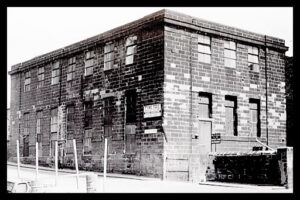
Above. Before The Go Go was the Downbeat Club which was an old Victorian era building down near the river. It was known to be the hangout of the Beats who had very long hair and seemed to wear black all the time.
The first time I went there it was to the all night session sometime in 1963. I remember hearing music I had never heard before. It was dark with old wooden floorboards and brick walls. Long haired people were shuffling around in the darkness to this “jungle ” music. Great rhythms and infectious. I had never heard this before. The BBC did not play that type of music. (One may have heard the odd piece once in a while on a late night jazz show).
I asked the d.j what was playing. The sound was so loud I could not hear the answer. Several tries later I heard ...”Its a Chess Record”– meaning anything from that Chicago label was worth playing, not the specific tune.
 Below-Chess Records and most other smaller US labels were not directly sold in the UK. They had to rely on British labels to distribute their wares such as Pye’s budget label Golden Guinea who put out this iconic collection of Chess tunes. But that’s another subject.
Below-Chess Records and most other smaller US labels were not directly sold in the UK. They had to rely on British labels to distribute their wares such as Pye’s budget label Golden Guinea who put out this iconic collection of Chess tunes. But that’s another subject.


In 1967 everyone in the UK was listening to the offshore pirate radio stations. The BBC at that time were severely limited as to how much “needle time” they had in a day and so most music had to be performed by musicians union members. It could not possibly keep up with the deluge of new music being generated at that time.
Into the void steps offshore stations or “Pirates” as they were called, beaming in endless recordings from ships anchored just off the coast of England. Radio London beamed in on the populous south east of England. During the day until midnight it was a mix of top forty hits with ads and jingles.
This all stopped at midnight when the daytime disc jockeys signed off and went to bed. No one cared what happened next during the wee hours. Enter John Peel (not his real name) recently returned from California with a pile of records to play that no one had ever heard of… yet.
These compilations in three parts is an attempt to recreate a typical show- which ranged from psychedelia to poetry to Indian ragas. For the magic to happen certain elements were necessary such as candles incense and a certain dark brown substance inhaled.
The Perfumed Garden quickly became a celebration of the “underground” scene in the UK playing a wide selection of folk, blues and psychedelic rock. He was one of the first broadcasters to play progressive rock records on British radio. He later went on at the BBC to champion all kinds of new music, especially punk in the late seventies. He was the longest serving of the original BBC Radio One DJs broadcasting regularly from 1967 until his death in 2004.
His first show for Radio London was in March 1967 and his last show was on 14th August 1967. Not very long a time except in our heads. That last show carried on beyond its usual 2 am finish, going through the night until 5:30am. There are tapes out there on the internet of this last show in entirety but the sound quality is very low. Remember these shows were on medium wave (AM) and there was static.
Listeners gradually formed a connection with Peel sending him poems, records, and letters so that his show began to take on a two-way style of communication. By the time he was in his last week with Radio London, Peel was receiving more content from fans than any other DJ for the station.
Probably not that radical now- but at the time it was the soundtrack to the counter culture of the era. It didn’t last long. Legislation in 1967 outlawed companies advertising so the pirates had to go off the air.
The Perfumed Garden introduced hippies to the Summer of Love. Peel also helped to lead the way for the biggest bands of the UK, changing the music industry as we know it by championing artists like Led Zeppelin, David Bowie, and Pink Floyd. By the time the 70s arrived Peel and his co-producers were recording and sharing sessions by The Wailers, Queen, and Roxy Music, while still somehow placating the Musician’s Union who demanded live content.
Peel continued to keep his ear to the underground of the music industry, playing records from unknown acts at the time, like the Sex Pistols, and the Smiths. In 1976, John Peel was also one of the men who helped to introduce the UK to punk, when he obtained an import copy of the eponymous debut album from The Ramones. Throughout 1977 and for years after many of the John Peel Sessions recorded on BBC Radio 1 were all about the UK punk and post-punk genre, with bands like the Banshees, Joy Division, and The Cure.
Perhaps the most well-known aspect of John’s life on the airwaves were the “John Peel Sessions” which began in 1992. These sessions offered an opportunity for bands to come in and record exclusive tracks within the BBC studios. Almost every influential band you can think of from the UK and US over the last dozen years has their own Peel Session, from Blur, to Nirvana, and countless others.
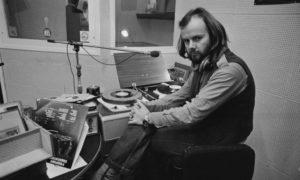 Following an incredible impact on the radio industry Peel died from a heart attack on October the 25th in 2004. The event happened when John was in the middle of a holiday in Peru.
Following an incredible impact on the radio industry Peel died from a heart attack on October the 25th in 2004. The event happened when John was in the middle of a holiday in Peru.
NOTE:There was a movie made called Pirate Radio in the UK and The Ship That Rocked in the US. In the movie Peel’s character was called Bob and at the end when the ship went down Bob went down with it to retrieve a lone album. The album was The Five Thousand Spirits or The Layers of The Onion by The Incredible String Band. A little joke as this band were played a lot on his shows and they epitomized the English take on hippiedom at that time which had a different flavour than the California version. You can hear all of the tracks Vol 1 here and Vol 2 here.
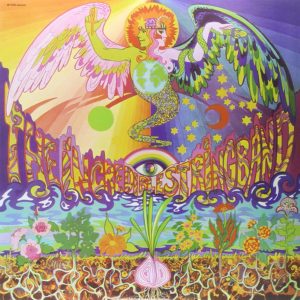
The phrase “Northern Soul” emanated from the record shop called Soul City in Covent Garden, London, which was run by journalist Dave Godin. It was first publicly used in Godin’s weekly column in Blues & Soul magazine in June 1970. Prior to that it was just called Soul Music and was de rigeur in most dance clubs of the sixties. Godin said he had first come up with the term in 1968, to help employees at Soul City differentiate the more modern funkier sounds from the smoother Motown-influenced soul of a few years earlier. With contemporary black music evolving into what would eventually become known as Funk moving to Disco, the die-hard soul lovers of Northern England still preferred the mid-1960s era of Motown-sounding black American dance music.
I had started to notice that northern football fans who were in London to follow their team were coming into the store to buy records, but they weren’t interested in the latest developments in the black American chart. I devised the name as a shorthand sales term. It was just to say ‘if you’ve got customers from the north, don’t waste time playing them records currently in the U.S. black chart, just play them what they like – ‘Northern Soul’.
My connection to Northern Soul was there was a friend who sold used cars and once we all took a pill popping weekend trip in a black Ford Zephyr to Manchester and the all night Twisted Wheel Club where this type of music was played. Not particularly novel at the time. In Newcastle we just called it Soul music but apparently in Wigan and Manchester they kept this style for themselves for many years after.
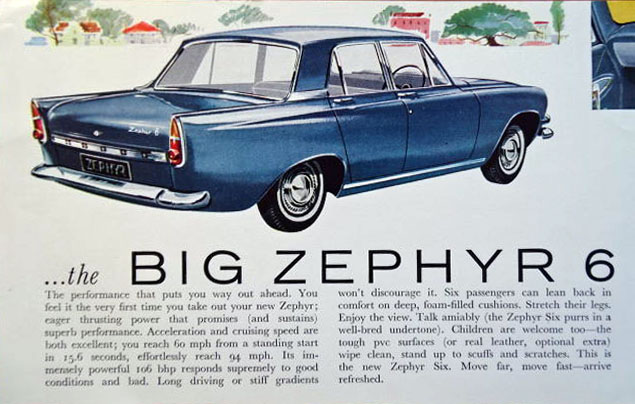
The British pop boom of the early sixties was fueled by what was called at the time- Pirate Radio.
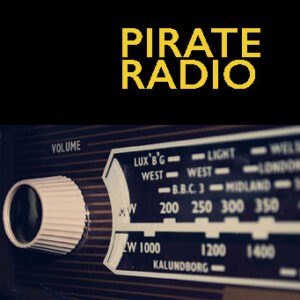
At the time the BBC had only four radio channels which catered to approximately four tastes in music. The Third and Fourth programs were serious classical and dramas. The other two were more mainstream and The Light Program aired the closest to what might be called pop music. One needed a license to listen (which to be fair paid for non commerciality). The Beeb employed live musicians for a large part of their output and “needle time” was minimal. In fact for any artist to be heard they had to be members of the Musicians Union. Also the channels were all closed down by midnight.
The BBC was not ready for the baby boomers who arrived as teenagers in the early sixties. The output of music aimed at these teenagers increased exponentially and Auntie BBC could not keep up with the volume and demand for the new popular music. Radio Luxembourg filled in with lots of needle time but only between about 6 pm and 1 am and it was loaded with static fading in and out on its journey from middle Europe to the ears glued to tiny (and tinny) transistor radios.
Into the void steps Pirate Radio. First Radio Caroline then followed by Radio London, then a slew of smaller stations popped up on rusty old hills or on concrete forts left over from WW2 . Unless one was right on the south coast of England it came in crackling with static. The stations were set up by entrepreneurs to meet the growing demand for pop and rock music, which was not catered for by the BBC
By 1967, ten pirate radio stations were broadcasting to an estimated daily audience of 10-15 million. Influential pirate radio DJs included John Peel, Tony Blackburn, Kenny Everett, Johnnie Walker, Tony Prince, Emperor Rosko and Spangles Muldoon.
The format of this wave of pirate radio was influenced by American radio stations. Many followed a top-40 format the antithesis of BBC radio at the time. As many of the djs were American the listeners got to hear many records not even released in the UK and thus worked upon a demand for these songs to be officially released. Also a dj was required to play 2 or three songs from the top 50 but then could fill in with another two or three songs of their own choosing which gave a musical education to those listening. One could hear jazz between the big hits.
Radio London stopped broadcasting at midnight when the daytime jocks retired for the night. By 1966 to 1967 there was a new demand in music from the flowers powered psychedelic crowd. and into the late night fray stepped John Peel and The Perfumed Garden. (https://auralfixations.allanstephenson.com/?p=202)
In reaction to the popularity of pirate radio the BBC radio was restructured in 1967, establishing BBC Radio 1, Radio 2, Radio 3 and Radio 4. The UK Government also closed the international waters loophole via the Marine Broadcasting Offences Act of 1967 making it illegal for any British company to advertise on these stations. Radio London closed in August of 1967 but Radio Caroline would continue to broadcast in various forms in various mediums right up to 1990.
A number of DJs of the newly formed Radio 1 came from these pirate stations including John Peel who then went on to greater heights with the BBC as taste maker and a maven for the next wave of music such as Punk.
For a documentary about perhaps the best of these stations Radio London here.
_____________________________________
When I left England in 1971 FM stereo radio was still in experimental mode. (Listen to an example here).
A good radio in Britain (and in Europe) had three wavebands- Long wave or VHF-FM), medium wave (AM) and short wave. The latter carried long distance but at very low quality. Long wave had great quality but did not travel far. Medium wave was a compromise between the two. There was also short wave which was very static laden but one could pull out very far away stations in the world.

In Britain the BBC broadcast on all those wavelenghs and was easily picked up anywhere in the country. However the output of music became increasingly limited as the sixties came and could not keep up with the volume of demand for popular music.
A very thoroughly modern take on swing music.
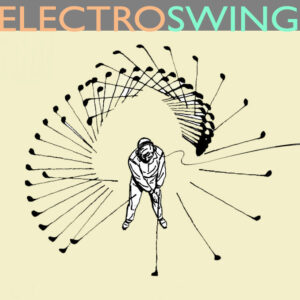
AURAL FIXATIONS IS-THE SOUNDTRACK TO (MY) LIFE
Writing about music is a bit like explaining art with words. The reason for images is they are NOT words. Words are redundant. However we still try.
Music to me is like oxygen. I have always taken note and collected it.
I started paying attention to music when I was a youngster in the mid fifties in England. I dont recall exactly when. All there was then to hear was the 3 BBC stations and distant crackling Radio Luxembourg (at night only) and whatever 78 rpm records my elder brother would bring home. I discovered some music moved me to dance – like swing and rock & roll. Later classical music on Radio 3 would do something “different” for me so I began writing down notes as to the names of the pieces and the composers.
I eventually learned that music can be organized into what you want it to do for you. Rather like lighting in a room it can make or destroy a mood. I also discovered that to most people music is not as important as to me.
I could never understand that, but these are the same people happily living in rooms with bare light bulbs on the ceiling and seeing no problem with that.
This blog is an adjunct to my music collections on Spotify and Mixcloud. The goal with these collections is to put out my history with music in an organized fashion for the benefit of anyone who is interested coming after me.
As far as popular and jazz music goes I suppose the sixties and seventies are more represented in my collections than others as those times were when I really absorbed much music being a teenager to being middle aged in London and then San Francisco during those impressionable periods. My taste is of course from these periods but I can appreciate the best of any era and there is a large selection of thirties and forties swing and jazz to be found. Each playlist or “set” is thematic. There is a beginning middle and end which I hope listeners stay for.